As a part of our content marketing efforts, we are always looking at ways that we can rank for certain search terms, to be authoritative resources for particular topics and to increase our organic traffic, and we want all of these efforts to result in leads, which directly affects our bottom line.
But it’s not as easy as blogging and pushing the publish button.
Google updates its algorithm faster than we can finish that first cup of covfefe in the morning, social media platforms are introducing new ways of using their apps and new must-have software is being released.
It is difficult, to say the least.
So how do we remain competitive and authoritative in this vastly changing digital landscape?
We read and read some more; then we create great, relevant content.
The What and Why of Content Marketing

Joel Pulizzi, the founder of the Content Marketing Institute defines content marketing as “a strategic marketing approach focused on creating and distributing valuable, relevant, and consistent content to attract and retain a clearly-defined audience — and, ultimately, to drive profitable customer action.”
Bruce Rogers the Chief Insight Officer for Forbes says that “Content marketing can be defined as the creation and distribution of meaningful insights, perspectives, and best practices that are valuable to a specific audience.
What do both of these definitions have in common?
Valuable, meaningful and consistent content creation will be the key to your content marketing success.
But why do you need content marketing?
It is a long-term marketing strategy that can help you build brand awareness and builds trust with your audience. Great content marketing builds backlinks which increases your website’s authority and directly increases your organic traffic, which can generate appropriate leads having a direct impact on your bottom line.
The Buyer Persona Fundamentals To Get You Started
What is a Buyer Persona?
A buyer persona is a “semi-fictional representation of your ideal customer based on market research and real data about your existing customers.”
Why do you need a Buyer Persona?
A good question.
A buyer persona defines our ideal customer base, so without knowing who your ideal customer is, how can you begin to create relevant and appropriate content?
Not a rhetorical question.
Your buyer persona is a fundamental building block in your content strategy, without it you will not achieve the content goals you set for your inbound campaigns.
So how do you define your buyer persona?
In understanding how important your buyer persona is, we can dive into how we go about defining these semi-fictional persona’s that guide your content strategy.
Let’s dive into the tools and techniques that have worked for us;
HubSpot has been a great resource for defining buyer persona’s;
- They have created a free downloadable template that you can begin filling out,
- They have also created this nifty MakeMyPersona tool which takes you through 19 persona related questions and once you have completed them you are emailed a working word doc of your persona.
So now you have a template for your persona, but what’s next?
Your persona now requires research and analysis.
You need to dedicate time to research your persona’s background, their company, their role within their company, the challenges that they face, what goals they want to achieve, how and where do they get their information from, and what their shopping preferences are.
So let’s look at each section in a little more detail with some example questions you may consider asking your persona;
Personal Background
- What is your age?
- Are you married?
- Do you have any children?
- What is your level of education?
Company
- What industry are you in?
- What is the size of your company?
- What is your annual turnover?
Role
- What is your role?
- How is your role/job measured?
- Who do you report to?
- Who reports to you?
Challenges
- What are your biggest challenges?
- **TIP - this question is crucial for people to answer as it will provide context and guidance for your entire content strategy, so don’t let this go unanswered or loosely defined.
- What are the solutions to your challenges?
- How do you go about considering solutions to the challenges that you face?
Goals
- What does it mean to be successful in your role?
- What are you responsible for?
Information/watering holes
- How do you learn new information for your job?
- Do you do online research?
- If yes? Do you read blogs or online publications?
- If yes, What are they? Could you please name a few
Shopping preferences
- How do you prefer to shop?
- Do you use the internet to research new product?
So now that you have defined the types of questions that you need to glean the types of information needed to develop a relevant and appropriate content strategy.
But, how do you actually do this?
We now need to explore how you go about retrieving this information. The preferred methods of doing this are interviews, surveys and polls;
Interviews - While many would prefer to leave this option as a last resort, it is the method that is often the most resourceful. By telephonically contacting your ideal customer there is a greater sense of connection with you and your brand. Your persona get’s to tell you their story.
Considering the amount of information one can glean from interviews, it will be crucial for you to consider this a primary form of persona research.
We suggest that before picking up the phone, have your questions prepared, and in front of you, this will help guide the interview process. You don’t want to go into a telephonic interview unprepared and unable to steer the conversation should you need to. So make sure you are well prepared.
Surveys - This is a great way to centralise the information you require. Tools like SurveyMonkey help you create easy to navigate survey’s that can be shared via email or social media or shared right from your website. This method of data collection is often cheaper and faster than conducting individual interviews and is often the preferred option for persona research. SurveyMonkey also provides access to the analytics of your survey, so that you can create reports based on what has worked and what may not have worked - giving you a strategy of how you would do this better in the future.
**The downside? The response rates are low at best. There has been much research on methods of upping those response rates through incentivising the survey, but even with this, the rates remain low. So bear that in mind when embarking on this method of persona research.
Social Media Research - Apart from getting information directly from your ideal persona, digital marketers have the added advantage of doing some research using various social media platforms and the analytics that they offer.
What do we mean?
Let’s take a quick snapshot of the current state of social media; there are “3 million Facebook posts, 1400 blogs and 500 hours of video content published every minute.”
Let’s dive into some of the social media platforms that we’ve used to gather information about our persona;
Facebook - With 1.9 billion unique visitors per month, Facebook is a great place to find information about your buyer persona. You can access the analytics of facebook under Facebook Audience Insights “This nifty tool allows you to analyse and create your own custom audiences based on all Facebook users or just those already connected with your page.”

Twitter - When you scroll over to your profile and settings you will get a drop down, you can scroll down to the “Analytics” tab which you can select, and it will take you to the tool, where you can measure the type of content that resonates best with your persona. This information will help guide the development of your persona.

Instagram - offers the insights tab for business profiles. These analytics provide insight into your persona’s behaviour on this platform. Instagram business profiles also provide insight into the demographic and age of your followers.

LinkedIn - If you head over to your company LinkedIn page, scroll over to the analytics tab, over here you will be able to uncover some valuable insights about your persona. The analytics go into things like seniority, industry and company size. This kind of data will be invaluable for your persona research.
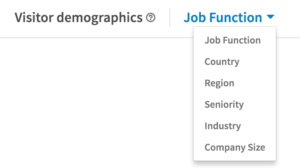
Each social media platform offers something different and unique in the way of analytics. This is not to say that your persona is present on all of these platforms, but as you uncover insights into which platforms your persona prefers you will be setting yourself up for a successful content marketing campaign based on your persona.
So What About The Buyer’s Journey?
Along with knowing your buyer persona you also need to know where they are within the buyer’s journey to create a relevant, appropriate and successful content strategy, but first what is the buyer’s journey?
The buyer’s journey is the process that your persona goes through right from the awareness of a problem or opportunity to evaluating and assessing their to the purchase of a product. We divide this process into three main categories, namely;
Awareness Stage - The buyer realises that they may have a problem or see an opportunity.
Consideration Stage - It is at this stage the buyer defines the problem and begins a process of research into solving the defined problem.
Decision Stage - At this stage, the buyer selects a solution to solving the experienced problem.
See the image below that visually depicts the three stages of the buyer’s journey below;

So how does the Buyer’s Journey affect the content you create?
Now that we understand the buyer’s journey we need to understand that our persona can be mapped within these three stages and that we need to create appropriate and relevant content to each of these lifecycle stages.
What do we mean?
Typically an Awareness piece would be an informative piece around a particular topic, your goal with this piece of content is to provide helpful and useful information. You need to keep in mind that your persona is only just becoming aware of their problem (or opportunity), so your content needs to help fill in any knowledge gaps or interest they may have in a particular topic.
Typically a Consideration piece can be clearer on how your service can solve a particular problem (or opportunity). Bear in mind that at this stage your persona has done their research into a multitude of solutions and is still evaluating what may be best suited to them. Let the tone of your content keep that in mind.
Typically the Decision stage content you create can speak explicitly about your service. This is normally in the form of free trials or demo’s, it is at this stage that your persona is ready to buy in or make a decision, so let the tone of your content reflect that.
The buyer persona and the buyer’s journey are all about creating the right content for the right person and the right time and to do that; you need to follow what we’ve laid out above. These steps form the proper foundation and will help guide a successful content strategy for your agency
The Top Two Content Marketing Tech Tools
In any field you find yourself in, you need the tools to do the job. So what tools do you need to get your content machine on the move?
There is an endless list of software out there; we endeavour only to list what has been useful for our agency;
HubSpot - is an inbound marketing and sales software that helps companies attract visitors, convert leads, and close customers. They have easy to navigate sales and marketing dashboards where you can create all the essentials of content marketing and easily quantify your efforts, through their reporting tool. They are constantly updating their software to make your content efforts through them a little easier.
Ahrefs - This software can provide in-depth analysis into your agency’s backlink and SEO profile. The software also allows you to analyse your competitor’s backlink and SEO profile. You can do in-depth keyword analysis within the tool as well as a content gap analysis. Ahrefs prides itself on the in-depth data and metrics it can provide you with.
Let us know what software has been useful for you.
Let’s kick-start your content machine
As an agency, we want to establish ourselves and our clients as industry thought leaders and influencers in any given industry.
How do we go about doing that?
First, we begin with content curation.
So what is content curation?
Curating content is a method of sifting through the latest and most popular content that is shared on the web and sharing it with your own social followings. In doing this, you begin to establish yourself as a reliable source of great consistent information that is helpful to your persona.
Often too much sharing of one’s own information can be seen as a bit pushy and over the top for many persona’s to begin a journey of trust with your brand. So diversify with great authoritative curated content that is helpful and relevant to your brand and persona.
So what content curation tools do we use?
Finding appropriate and relevant content doesn’t just fall into your lap, you need the tools to curate great content. So what are they?
BuzzSumo - This site is not only great to know exactly what content is currently trending but you will also be able to see the number of shares per social platform. You will also be able to view who the sharers are; this can provide valuable information to whom industry thought leaders might be. You will also be able to see where the posts backlinks are coming from, which will help you determine the authority of the post. This kind of information provides valuable insight into the kinds of high-quality content that you will want to be sharing with your own audiences.
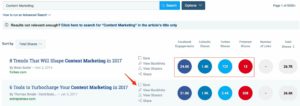
Google Alerts - Is a Google tool that offers as a way of keeping in the loop on popular trends or topics according to particular search terms that you save with your email address. You will get emailed your alerts on a daily basis, so that any updates in the news, you will be the first to know.
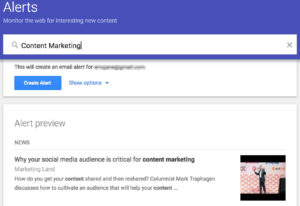
Feedly - is one of the most popular RSS and blog readers in the world. You can categorize your blogs according to a topic, allowing for easy navigation. You can also customize your feed to create a clean and easy navigable tool. By clicking on the feeds you follow, you will be brought to a homepage where you can see the most popular or most recent news and blogs according to that particular feed.

Content curation is a great way to increase your social following through sharing great, relevant content that resonates well with your persona. Curation is a method of building a relationship of trust with your audience, where you are always a reliable resource of information as your persona begins with their online research.
5 Different Content Types To Get You Started
Apart from blogging, how else can you go about your content marketing efforts?
After all, every human is different and unique and the way in which we consume content reflects that too.
So as a content marketer it will be important for you to experiment with different content types.
Let’s dive into some of the content types you might want to explore creating;
- Infographics
- Video
- Giphy
- How to guide’s
- Case Studies
These are just a few of the different types of content you can experiment with, which will give you a good range and diversity of content that will also boost your SEO efforts.
For The Love Of the Content Calendar
A content calendar helps to map out certain time frames for your content activities. The calendar needs to be accessed by everybody for a particular project. We have created a calendar template within Google Sheets with a shareable link that can be pasted within one of our project management tools, like BaseCamp.
** The G Suite Vs. Office 365 debate - This is not much a debate for us, but more of a preference in the use and functionality of the G Suite over Office 365. There is often talk of the limited storage of the drive, but as an agency, much of our work is done using Google Docs & Sheets which does not add to the use of our storage space. We enjoy the easy to navigate and collaboration that the G Suite offers.
This calendar should be updated constantly to reflect the work that has been completed and to show which content is still to come.
Content calendars are important because they map out the kind of content; from eBooks to Case Studies to the supporting blogs, social media posts and any email marketing campaigns that you may be running. This provides a convenient overview of the content strategy that you have developed with your client.
See the image below to see what template has proven helpful for us;

The Blogging Fundamentals

What is a blog?
A blog is an online source that provides helpful, relevant, enlightening and useful content to a targeted audience.
Why does your company need a blog?
Hubspot states that 43% of companies that have a business blog acquire customers through their blog. Blogging is a fundamental way for businesses to attract more prospects and leads to your website, therefore securing better-qualified leads and customers.
Blogging is at the heart of the Inbound Methodology. Because each blog gets published on its own individual indexed page on your website, it makes it easier for potential customers to find you online. Through educational content, your company can build authority and trust with your customers.
So, how do you get started?
If you’ve never started a personal or company blog before, it can seem a little overwhelming. But, there’s no need to worry, we’ve laid out the steps you need to follow below.
Step 1: Choose your preferred blogging platform
There are a number of blogging platforms out there, some are good and some are better. You’ll need to decide which blogging platform is the best for you to use. Wordpress, Tumblr, Blogger are a few examples.
We’ve found HubSpot to be the most effective as we’re able to use the software to integrate our sales, marketing and customer side of things all on one platform. Cool right? 😎 Your decision should ultimately be based on what platform will cater the best to your agency’s needs.
Not sure which platform to go with? Read this useful article which compares the best blogging sites for 2017.
Step 2: Brainstorm Some Topics
Now that you’ve got your blog online, you need to decide what you’re going to write on. Remember, you’re content needs to be interesting, valuable, and educational. More importantly, it needs to relevant and related to the services your agency provides, to attract the right customers to your site. If your content doesn’t appeal to your targeted audience, you’re never going to attract the right visitors to your website.
Always keep your buyer persona in mind and write the content for your ideal customer. Use keyword research to help you determine the title and topic of your blog.
So, you’re probably thinking, what is keyword research and how do I do it?
Well, this brings us to the next step of blogging fundamentals.
Step 3: Do Keyword Research
Keyword research is one of the highest return SEO activities and is essential for your marketing success. It is researching and finding the actual search terms that people enter into search engines and helps to drive your content and marketing strategy.
It’s important to note that there’s no universal approach to doing keyword research correctly. There are countless resources available which provide a different set of instructions.
However, one thing is evident; keyword research is vital for improving website traffic from Google.
The best place to start is by brainstorming important, relevant topics based on what your agency does.
Come up with at least 5 - 10 topic clusters that you can identify as being important to your business and customers. Think about your customer’s pain points and how you can solve their problems. These topics should include keywords that you ultimately want your website to rank for. Always put yourself in the shoes of your buyer persona and where they are on the buyer’s journey.
For instance, if you’re a marketing agency, general topics such as ‘content marketing,' ‘search engine optimisation,' ‘email marketing,' ‘social media marketing,' ‘content strategy,' ‘Paid Per Click Advertising’ and so on.
From there, fill your topic clusters with keywords.
Now that you have an idea of which topics you want to focus on, you need to identify keyword phrases which you think you want your blog/website to rank for in the search engine result pages or otherwise known as SERPs. When your targeted customers search for information online, they use specific terms and phrases (keywords) upon which the search engine, such as Google, provides them with a SERP.
If your topic cluster was ‘email marketing,’ a few keyword phrases that people might be searching for online could be:
- If your topic cluster was ‘email marketing
- What is email marketing?
- How to set up a mailing list
- The best automation tools
- How to write a killer email
- Email marketing best practices
- 20 tips for killer email subject lines
- Top 20 email marketing tips
- How to run a successful email campaign
- The Do’s and Don’ts of email marketing
This brainstorming step is important and can be more effective when done in groups. Step out of the office for a moment, sit under a tree, or on a beanbag. Enjoy a change of scenery and let your creative juices flow. This list won’t be your final list of phrases; we still have a few more steps to get through!
A quick word on why topic clusters are so very important.
Google has recently changed its algorithm to understand the intent of your search better. Instead of having to rely on specific keywords to pull up your site pages on search engine results pages, Google now serves appropriate content without having to use precise terms. So, by building topic clusters, you gain authority on an entire subject and Google recognises it. For example, if you want to own the subject ‘email marketing,’ and someone searches for any general term within that topic, such as ‘automation,’ the chances of them finding your content is really good.
Now that you have a few keyword phrases in mind, it’s time to talk about Head Terms vs. Long Tail Keywords.
Head terms are keywords that are general, highly competitive and are usually comprised of one or two words. Their monthly search volume is extremely high and keyword difficulty is high too, making it difficult to rank for. On the other hand, long tail keywords can be viewed as the low hanging fruit of the SEO world. They’re typically lengthier, more specific, bring in less traffic and have a lower keyword difficulty.
‘Email marketing’ is considered a head term whereas ‘importance of email marketing’ or ‘benefits of email marketing’ are considered long tail keywords.
So, should you rank for head terms or long tail keywords?
Well, the answer differs depending on who you ask. Google continues to update and improve their search algorithm, which has a direct impact on your website traffic. We used to solely target long tail keywords because they’re easier to rank for and they are cheaper to advertise. Basically, we targeted easy quick wins and ranked on the first page of Google for a number of these long tail keywords.
But, were people actually searching for these keywords?
Let’s take a closer look. To gain insight into what the keyword’s search volume is, difficulty score and other metrics such as current keyword rank, cost per click etc. we use Hubspot and Ahref’s advanced, really awesome SEO tools.
Let’s look at an example. One of our clients provides specialised quality management solutions to apparel brands. Their website is ranking number 1 for the keyword ‘textile quality management solutions.’
Awesome right?
Well, not really.
Turns out, when searching for the keyword in HubSpot’s keyword explorer, no one is really searching for those terms, so the keyword isn’t driving much traffic to the website.

When looking at Ahrefs, we can see that we’ll need 3 backlinks from 4 websites to be able to rank in the top 10 for this keyword.

Although we’re already ranking number 1 for this keyword, it’s doesn’t drive enough traffic to the website.
For this reason, we’ve recently changed our strategy to focus on head terms too, instead of mainly long tail keywords. We think it’s important to have a healthy mix of both because it will give you a well-balanced keyword strategy that is comprised of long-term goals and short-term wins. For our quality management client, targeting head term such as ‘softlines’ which generates a large number of searches, isn’t difficult to rank for and is still relevant to what our targeted audience might be searching for is a smart move.
HubSpot shows that ‘softlines’ generates a decent amount of traffic:

And Ahrefs shows that you only need 2 backlinks from 3 websites to rank in top 10 for this keyword:

Looking at the data, it makes sense to incorporate head terms in your keyword strategy which you aim to rank in the top 10 for over the long haul. Don’t get us wrong though; long tail keywords are still really valuable.
Let’s go back to our example keywords ‘email marketing’ and ‘importance of email marketing.’
Email marketing as a head term, generates a significant amount traffic but is incredibly difficult to rank for and chances are slim:
![]()
Ahrefs shows that you’ll need an incredible 95 backlinks from 1391 websites to rank in top 10 for this keyword!

On the other hand, ‘importance of email marketing’ generates a decent amount of traffic even though it can be a little bit difficult to rank for once off, and will require more time.
Hubspot shows a 38 difficulty and 50 monthly searches:

Whereas Ahrefs indicates 170 global search volume and 17 keyword difficulty. This would be a good keyword to rank for.

Although email marketing will generate a higher amount of traffic, the traffic coming in from importance of email marketing is probably more desired. Someone searching for something that specific, will be more qualified for the product or service you provide as an agency and is probably closer to the decision stage of the buyer’s journey. Someone searching for email marketing which is very general could be doing so for many different reasons.
Step 4 - Pick Your Title
Before we dive any further into this step, let us just mention something very important - your title should never be longer than 70 characters, and be sure to always include your keyword in your title. The reason for this is because Google cuts off any title that is longer than 70 characters on search engine results pages. The search engine and user will use the keyword to determine the relevancy of the blog, which is why including a keyword in your title is vital.
Looking for a unique working title that your competitors aren’t targeting can be a tough job. Fortunately, the web is loaded with free keyword research tools which can make this process a little easier.
Some free tools that we use are:
For example, if we want to use the keyword ‘email marketing’ in your title, here’s how Ubersuggest will help:
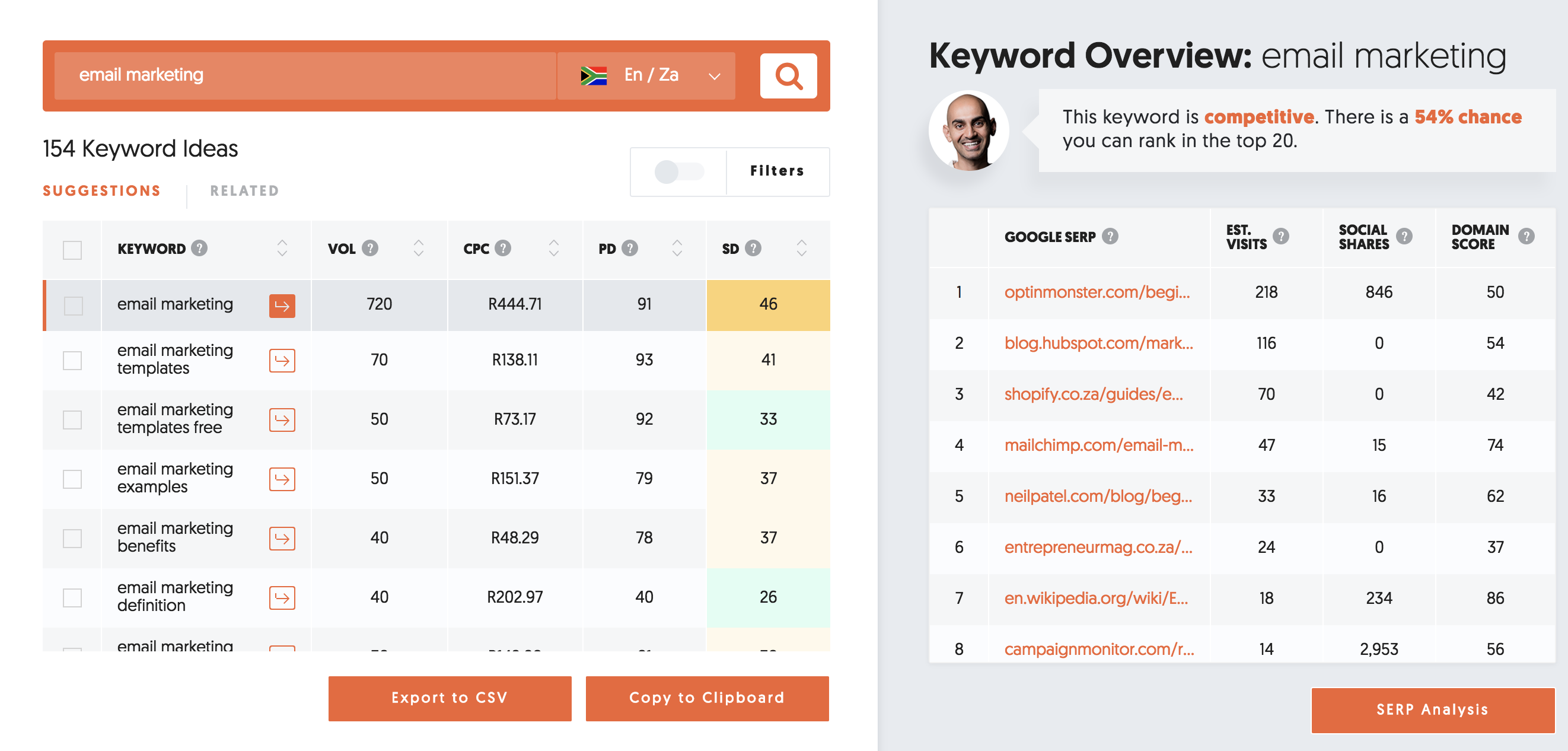
And HubSpot Blog Ideas Generator:
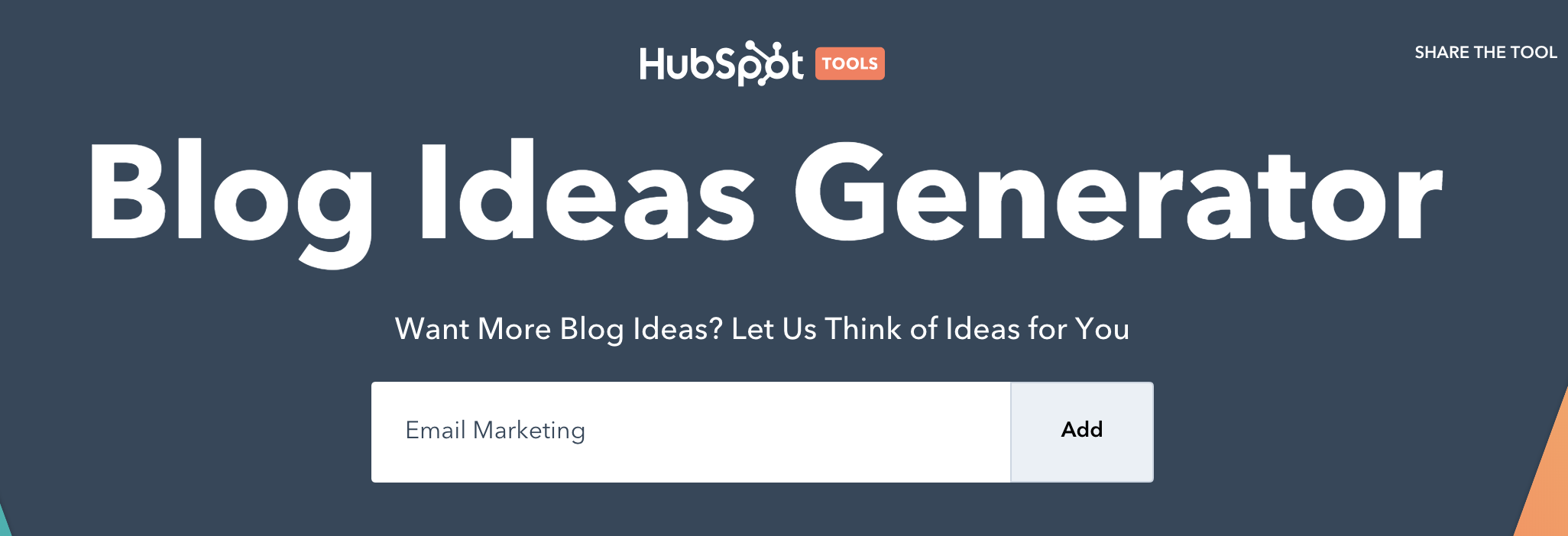
You may decide to use one or two of these tools, or even all three. It doesn’t really matter; they’re all super handy in helping you generate a few ideas until you find something you feel will represent your product/services and speaks to your persona.
Another way to get blog title ideas is to type the keyword you’re targeting in a search engine such as Google. Let’s take ‘importance of email marketing’ as an example:
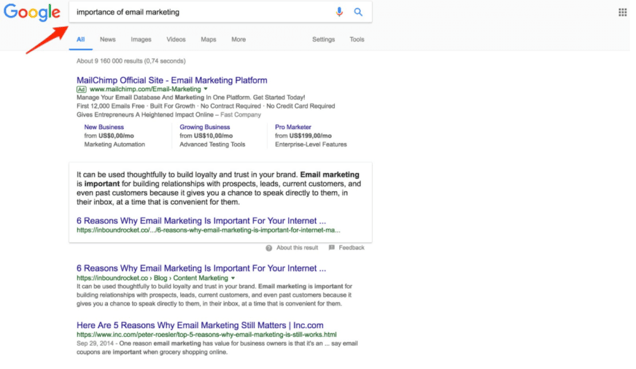
Along with the many different title suggestions that pop up, if you scroll to the bottom of the page you’ll see a list of searches related to ‘the importance of email marketing.’
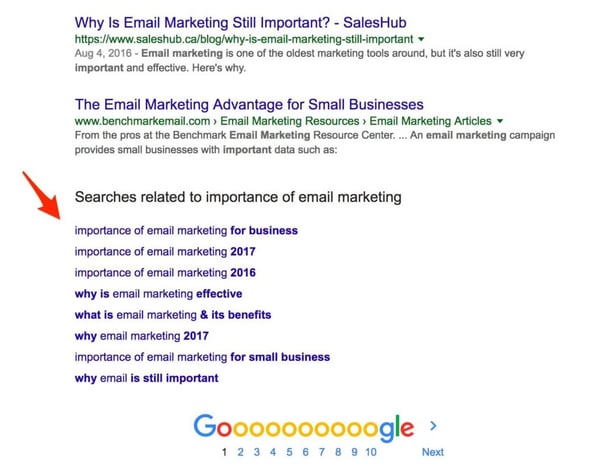
Although this doesn’t seem like a massive tip, you’ll be surprised how much this simple method can help when you’re experiencing a brain dump.
Step 5: Write Your Blog
Ok, so we’ve finally reached the actual blog writing step! Didn’t think that blogging was so complicated, did you? Just kidding. Once you get the hang of it, it’s not that difficult.
In the blogosphere, content is king. But not just any type of content. Any great blog is made up of content that is valuable, unique and relevant to your reader. Before you start writing, you need to decide what the end goal of your post is and what you want your reader to walk away with. Do you want them to be informed? Inspired? Entertained?
Once you’ve chosen your goal, it will be easier to determine which type of blog post you’re going to write. There are many to choose from! Some of which include:
- Instructional
- Case Study
- Informational
- Reviews
- Research piece
- Editorial
- Inspirational
- Satirical
If you’ve never written a blog before, don't’ worry. Blogging becomes easier the more you do it. Eventually, you will develop it into a skill. There are a few ways to approach blog writing, and you’ll soon figure out what works for you. You can either sit down and write out the entire draft or you can chip at it gradually over time. There is no right method, it all depends on whether you work more efficiently in short bursts, or in one sitting. It is advised however to try and get as much done in your first sitting to ensure consistency throughout your blog.
So you might wonder, how long should your post be?
The simple answer is that your blog post should be as long as it needs to be. If you’re covering a particular topic and reaching 2000 words but haven’t achieved the goal of your post, then you need to keep writing. For example, the blog article you’re reading right now is a Pillar Content piece. Our goal is to cover every spectrum of content marketing out there in this blog post, with the aim of providing content that is valuable to you, our reader.
Just because we’re nearing 5500 words doesn’t mean we’re going to stop. There’s still a lot to cover! Get what we’re trying to say?
A simple method we use which is really helpful in structuring your post is called the APP method:
- Agree
- Promise
- Preview
So in the first paragraph, you would run through the basics of your topic and try to get the reader to agree with your point of view by for example stating a problem such as:
‘Successful email marketing campaigns can have a major positive impact on your business’s ROI. But, most people don’t know how to do it right.’
By agreeing, readers confirm that they understand your topic and problems involved. Here’s where you state your promise:
‘But, did you know that with a few simple tricks, you can have an email campaign that is guaranteed to bring in valuable leads?’
From here, you end off with your preview:
‘In this post, I’m going to give you the tools needed to set up email campaigns that can double your website traffic!’

Source - https://www.highervisibility.com/blog/be-a-better-content-writer-5-simple-habits/
Lastly, remember it is crucial for you to always check your facts. Sharing statistics and facts that are untrue can severely hurt your blog's credibility and authority, even if you have a ton of loyal readers.
Step 6: Uploading and Search Engine Optimising Your Blog Content
Now that you’ve written your blog let’s get into the SEO side of things. There are a few things to consider to ensure that you leverage the full potential of your blog, such as:
- Keywords in titles (70 characters)
- Keyword density
- Keywords in headers
- Meta description (160 characters)
- Image file names and Alt tags
- Internal links
- Link building
- Blog formatting
- Call to actions
- Mobile Optimisation
The uploading process of your blog will vary depending on which blogging platform you’ve opted for. But, the following uploading and optimisation techniques can be applied regardless of what blogging platform you use. As we’ve mentioned before, we use HubSpot, so we will demonstrate the example using the HubSpot editor.
Let’s assume that our keyword is ‘importance of email marketing, ’ and blog title is ‘The Importance of Email Marketing for Agencies.'
- Keywords in titles
We’ve already touched on why including keywords in your title is NB. But just to remind you, your title should be no longer than 70 characters. We know that sometimes this can be hard, and there may come a time where you have no choice but to use a title that is slightly longer than 70 characters. If this is the case, make sure you slot in your keyword at the beginning of your title to avoid your blog post losing relevancy over being cut off in SERPs towards the end.
- Keyword density
When optimising your blogs for the keywords you have chosen, a good rule of thumb is to either select one 1 or 2 keywords per blog. It’s up to you whether you use long tail keywords, or head terms or a mix of both. Your decision should depend on your keyword research. Ensuring that you have no more than 2 keywords per blog post will ensure that you stay focused on the goal of your post.
Using too many keywords in your blog post will affect your SEO negatively and make your content seem unnatural. Google will identify your content as spam, so it’s essential to keep keyword density between 2%-3% per blog post (about 5 times).
The great thing about Hubspot is that they have specific SEO optimisation tips situated in the editor for each blog that you upload. So you can use them as a checklist, and if you’ve missed something or accidentally made your title too long, or perhaps included too many keywords in your blog, Hubspot will let you know:

As you can see, we still have a lot to do!
- Keyword in headers and URL
SEO considers the h1 header and URL to be very important. Ensure that at least one of your h1 headers includes a keyword. When Google does a page crawl to understand what the piece of content is about, one of the first things it looks at is the URL. Because each active blog post has it’s own unique URL; it is a valuable opportunity to earn a higher ranking for your keywords. Another useful tip is to make sure that your subheadings are benefit-driven, which makes it easier for the reader to see the value in the next paragraph and continue reading.
- Meta Description
Just when you thought the writing was all over...You have got to create 160 character limit description of your content which needs to be compelling, provides value and strikes an element of curiosity with your reader which also adds to your SEO efforts.
Something so seemingly short, yet crucial to your entire blog.
You have spent mounds of time structuring and researching your blog, ensuring the keywords you have selected are appropriate and will help your SEO efforts, so don’t let a badly written meta description crush all of your hard work, because it will. Your creativity shouldn’t stop at the conclusion of your blog, your meta description can be the key to your persona clicking through and reading your article or just skimming past it without giving it a second glance.
Let’s take a look at an example of a good meta description so that you can see for yourself.
The below is a great example of a compelling meta description that tells you exactly what you are going to get from the blog article as well as creating a curiosity of what other brand they may be referring to.

Your meta description needs to be short, compelling and should include the keyword you want to rank for. For example, when searching for the ‘importance of marketing’ on Google, you’ll see that the keyword is bolded in the meta description which makes it easier for readers to make the connection between what they’re searching for and the result.

By following this guideline, you will be on your way to generating a click-through rate to be proud of.
- Image file names and alt tags
Images should be used to help explain your content. No one wants to read a blog that consists only of text.
Right?
Optimising images and alt tags can often be forgotten in the world of SEO. But, they too can bring valuable traffic through to your blogs. Think about it, how many times have you searched for an image in Google and found yourself on the website that hosts the image? And how many times have you searched for an image alone?
When search engines look for content, they don’t just look for images. Instead, they look for images with alt text. The image alt text tells the search engine what the image is about. Rather than leaving the image alt text as for example, ‘img-015.jpg,’ giving it a relevant, descriptive name with a keyword if possible, such as ‘the importance of email marketing.’
For example:
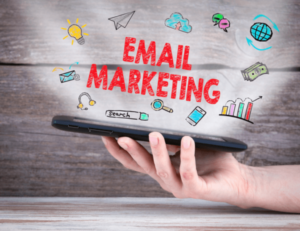
The alt text for this image would be:
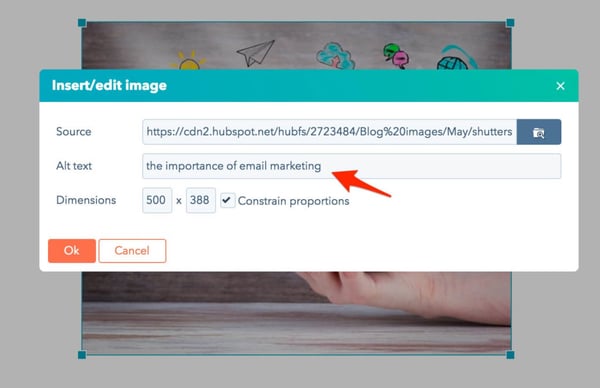
Although this part of blog optimisation may seem minor, it is still necessary. It’s also important to ensure that the image is optimised in the right context. Meaning that the keyword optimised image should be close to the keyword optimised paragraph and h1 header tags to ensure that you’re turning up an image search.
Lastly, always make sure that your featured image contains a relevant title text.
The featured image is the thumbnail image that represents the entire blog post. It is the first image that users see when they share content on social media channels such as Facebook or LinkedIn, and it is also the first image they will see when they read your blog:

So, it’s important to make sure that your featured image is eye-catching and appealing enough to reel in your readers. When it comes to optimising your image for SEO, you need to make sure that you’ve included at least one of your keywords in your title which is relevant to the content of your blog. You can never go wrong with saving your featured image as the title of your blog. That way you know it will include your keyword, and Google will have enough textual cues to decipher what your blog is about.
A good tip is to never use underscores for the title text of your featured image because Google will read it as one long word rather than individual words.
While we’re on the topic of featured images, what do you think about the image represented in the above example? Is it...
- Compelling?
- Eye-catching?
- Relevant?
While it certainly strikes relevance, it could be more exciting or attention-grabbing. The title suggests that you’ve found the holy grail of all email marketing resources out there, and you’re being promised the very best marketing campaign examples that you’ve ever seen! An image that is a little less generic and more captivating would have been preferred.
Maybe a little something like this…

It all depends on where you get your stock image from. We use Shutterstock, but there are also a few free platforms such as Pixabay where you can download royalty free images, although they have their limitations.
- Hyperlinking
When we began our inbound journey, whilst knowing about hyperlinking we endeavoured to load our blogs with many inbound links, what we didn’t quite realise at the time is that there is a little strategy that goes into the internal links you place within your blog posts.
Strategy, hyperlinking, really?
So whilst you can internally link all over the place, this may not be as beneficial for your SEO efforts as you might think.
Google may seem complicated, but there is structure to the way in which they crawl your website and decide on your rankings. So structure your website and blog content accordingly, so Google doesn’t end up penalising you for easily avoidable small mistakes.
You get 3 main types of hyperlinks;
- Internal hyperlinking - Internally linking between two of your own web pages is what creates your hyperlink.
- External hyperlinking - This is a link from your web page or blog post that links to somebody else’s. You are creating a backlink for them and helping boost their SEO efforts but yours as well. More of that in a bit.
- Incoming links - This is a link from someone else’s webpage to your site. This is what we call a backlink.
All that being said it is also important to take into account the actual text that you select for your hyperlink whether it be internal or external. The text itself needs to be relevant to the point you are trying to make and also exactly define what they can expect when they click on that hyperlink. It all needs to be strategically connected.
- Link Building
This topic deserves its own eBook.
The crux of all your SEO efforts can be brought down to how much time and effort you put into your link building strategy.
So what is all the fuss about?
As defined above; link building is the process in which an external website links to your website. While this sounds simple and relatively easy, it forms a large part of our daily to do’s.
Let us tell you why;
The amount of authoritative external links your website has will positively influence the way that Google crawls and ranks your site. The converse is also true, gaining links from sites that have a lesser domain and URL ranking than your own will affect your website and SEO negatively.
So what is a link building strategy?
There are a number of tactics you can adopt to begin your journey to building high-quality backlinks, so what are they?
- You can start by creating a list of websites that appeal to your persona, content or sites that they engage with. You can then begin an outreach strategy. When you draft your email it will be important to reference or mention the particular post that resonated well with you and mention a relevant article of your own and request whether or not they would be interested in you guest posting for them. **Reminder - This is mutually beneficial for both you and them.
- Comment on informative blogs to establish you or your agency as a thought leader, at times where relevant you can leave a link to help clarify a question or topic even further.
- If you found a particular piece of content useful and you are thinking about curating it, make sure to @mention the website/company; simple online etiquette can bode well for future opportunities.
- You can submit your blogs, eBooks, case studies and infographics to online directories which also creates external links for your site.
These are only a few tactics that are easier to begin with, but you can find a complete list of link building tactics here.
If there is one thing that you take away from this section, it is not about a number of links that your site has; it is absolutely about the quality of the links that your site is able to acquire.
Blog formatting
It can sometimes happen that we’re so worried about the content and SEO side of the blog, and completely neglect the format of the blog. Remember that you readers are looking for something that’s presentable, readable, and also, skimmable.
Yes, you read right. Skimmable.
Remember, we (humans) have shorter attention spans, many more distractions and far less patience than what we use to have. Your reader is just one Facebook notification away from bouncing off of your page. Which is why your content should be structured in a way that is easy to digest.
To make sure that your blog content can be processed easily, include enough headers and subheaders which stand out and break up the content. Your font needs to be easy to read, not too big or too small, and you should also make use of many paragraphs and bullet points to break up the text. Lastly, don’t be afraid of white space, emphasis on the white. In fact, embrace it. Backgrounds that are too colourful are difficult to digest, and the text will appear to be cluttered.
White space ensures that your content has enough space to breathe and highlights what’s really important - the content.
Here are a few blog formatting best practices:
- Start with a catchy blog title
- Make the blog as long as it needs to be
- Use headings, subheadings, bulleted lists and numbers
- Use bolded text
- Offer a table of contents of necessary
- Choose high-quality, killer images
- Break up paragraphs
- Embrace white space
Call to action
Call to action or CTAs are an integral part of your blog and Inbound Marketing. Without them, we would not be able to send readers further down the conversion path or capture any leads. They visually guide your readers down the marketing funnel by sending them to different landing pages where they are prompted to fill out a form in exchange for an offer such as an eBook, Checklist, Newsletter or Case Study, etc.
- Subscribe to our newsletter!
- Download our eBook!
- Click here!
- Request now!
Sounds familiar?
We thought so. CTAs are words that are strategically catchy and impulsive by nature. It encourages your readers to take action immediately. And just like that, your reader is now a contact and has entered your database. Sneaky right?
Not really, it’s just smart. 😉
Your CTA should use an action-oriented verb to get your prospects to click through. Even though the words ‘Download’ or ‘Click here’ are action orientated, they’re a tad too conservative for today’s tech-savvy reader. What I’m saying is that they don’t need to be boring.
Your CTA needs to highlight the benefit your reader will get by clicking through. Try going for phrases that are a little bit sexier. Like:
- Join our Tribe
- Stay Connected
- I Want More
- Get My eBook
- Let’s Chat
These CTAs immediately let the reader know what they’re in for and sounds way more natural. It actually feels like there’s another human on the other side of the screen, and the reader knows that they’ll get something in return for clicking through.
Remember, your CTA should also always coincide with your blog content. If the title of your blog is ‘The Importance of Email Marketing for Agencies,' the offer you’re promoting through your CTA should also have relevance for email marketing.
But, instead of CTAs that read ‘Download our free email marketing eBook,’ go for something that is more descriptive and alluring. Such as; ‘Learn how to write awesome emails that get opened, read and clicked with our free eBook!’ Sounds much more enticing, doesn’t it?
So, how do you make your CTA stand out?
For readers to click on your CTA, it needs to stand out on the page visually. There are many different ways to experiment with a CTA such as the button colour, text, placement, and size. It all depends on what corresponds best with your website design and colour. Contrast is key for making it stand out. Look at what colours are most common on your website and landing pages and pick the opposite. The colours orange and red are also generally high converting button colours. While you want it to stand out, you don’t want it to be too big or distracting, which will result in banner blindness which means that readers consciously or subconsciously avoid banner-like information.
You want your CTA to be in the right time at the right place; therefore location is crucial. Where you decide to put your CTA will depend on what your CTA is offering. If your CTA offers a piece of free content such as an eBook, a good place for it to be located is at the bottom of your blog page. After they’ve read your blog on email marketing, the next step is for them to learn how to write awesome emails by downloading your eBook.
Looking back at a blog we wrote for our client who provides specialised textile quality management services. The title of the blog is ‘Does Textile Quality Control Need to be Expensive?’
We’ve placed a CTA at the bottom of the blog offering our eBook on the cost of quality in the apparel industry:

Relevant Right?
If you want them to subscribe to your blog, your CTA could be placed at the top of the page:

This brings us to anchor text CTAs. (Pay attention, they’re really important!)
An anchor text CTA is basically a stand-alone text-based call to action which links text to a landing page. It’s usually styled as an H3 or H4 to make it stand out from the rest of the copy on your blog, but they seem more natural. Because of banner blindness, people tend to ignore ads and sometimes CTAs can appear that way. People tend to trust anchor text CTAs more because they’re perceived as being more genuine and straightforward. A good place to insert them is after the first few paragraphs of your blog, in case the reader doesn’t make it to the CTA at the bottom of the page.
Remember, CTAs are very important as they convert your blog visitors into valuable leads and subscribers for your business and there are many different ways to include relevant CTAs in your blog posts.
- Mobile Optimisation
Our last step for uploading and optimising your blog is to make sure that your blog and website is 100% optimised for mobile devices! This isn’t a ‘nice feature; to have, it is absolutely imperative.
This has become such a crucial part of the digital world that businesses whose websites aren’t optimised for mobile risk losing valuable customers and leads. Google stated in May 2015 that mobile search which includes smartphones and tablets had surpassed traditional desktop search for the first time in history. That was in 2015, so that number has increased indefinitely
Depending on your blogging platform, you can preview your blog on mobile devices, and tablets like Hubspot does:
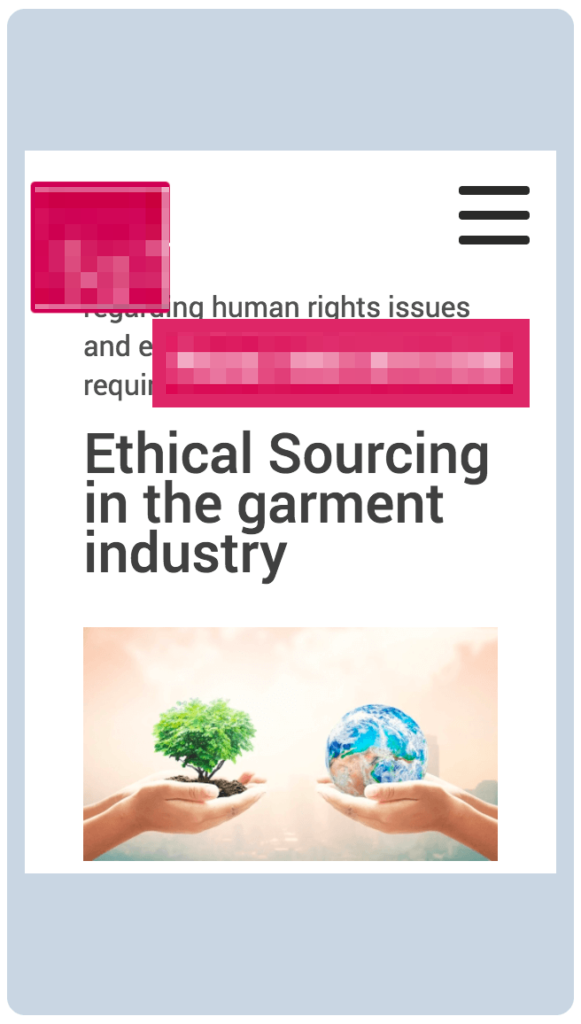
And that’s a wrap for The Blogging Fundamentals. Quite a lot to take in hey! Stick with us as we take you through techniques to combat writer’s block, checking your grammar and more.
4 Writing Techniques To Overcome That Dreaded Writer’s Block
We all hit that dreaded writer's block wall and sometimes when it hits, it feels like there is just no way out, the creativity has gone out the window, left you with nothing, no words, no thoughts and no motivation to write another word, but the deadlines, they are always there!
So what then?
We read a blog recently on how to overcome the dreaded writer’s block that copy writer’s face and the techniques that this writer adopted to overcome them. This piece was zestful and inspirational, to help find that passion for words and sentences again.
So what were they and what worked for us?
1. Exercise - Don’t let injury put you on the sidelines. You’ve read the research on how exercise releases those endorphins, allowing you to feel happier and rejuvenated. A couple of laps in the pool twice a week or a stroll on the beach or in the mountains can be what your mind needs to freshen up. Don’t let this one slide, it’s important for your physical, emotional and mental state of health. Make this a priority, you won’t regret it!
2. Strange writing hours - This may sound odd, but if you think back to those university days when were you most productive? At the strangest of times is our guess. So follow through with that, it may be midnight or it may be early hours of the morning, maybe even before work, but catch it whilst the ideas are fresh and the words avail themselves to the moment.
3. Switch off all of your notifications - Too often we get sucked into checking social media accounts as a way of procrastinating. If it’s not that then the push notifications of the various messaging and project management apps and tools that we use can be distracting. Set yourself a time goal and switch off all notifications and just write.
4. Coffee or is it Covfefe? - Whichever it is, it cannot go unmentioned that this liquid gold and the pure caffeine goodness that it provides can help get those creative juices flowing once again. Coffee not for you? No problemo, tea, power smoothies or an energy bar can also unleash the creative beast.

How To Check Your Grammar With Grammarly
As a content marketer, your grammar needs to be on point. It is likely that you will be wanting other agencies and industry experts to be reading your content, it does not fend well when people can spot basic grammar mistakes in your content. It is unprofessional and not how you want to be aligning your brand.
There are a number of tools and techniques out there to make sure you put your work against the ultimate grammar checks, so what works for us?
Peer Review - We implemented this process to filter out any structural and grammar problems within a piece of content. This process also ensures that one person is not too bogged down with all the reading and reviewing of content. Fresh eyes and a fresh perspective can be the key to a great piece of content.
Grammarly - We signed up of for the premium Grammarly account, which is pretty nifty in scoring your grammar mistakes, if you are slightly competitive with yourself, you will enjoy this functionality and try to beat your score each time.
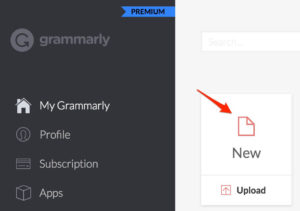

**TIP - If you struggle (like us) in losing your formatting when copying and pasting your work into Grammarly, it is then recommended that you upload your doc, (if you are using Google docs as we do, you will need to save your doc as a word doc first). Then upload your doc into Grammarly and when you are done editing, you can then push the Download or export button.
These techniques work for us, drop us a line in the comments section to let us know what’s worked for your agency 😊
So where does one share content?
A good question; and one we are constantly looking to answer in new and exciting ways.
Email - your existing database when new content comes out, you can also get them to subscribe to your blog to ensure that you are getting eyes on your content. Don’t forget your social share links, so that your persona can share your content when it resonates with them so much they feel the need to share it with their social networks.
A diversity of content types - This could also fall under repurposing your older content, but for this piece; it can be important to use different formats for your content, to relate to a uniquely different audience at any given time. Your persona research will inform what works best, but don’t be afraid to try new things.
Submit your content to online content communities - There are many blog submission sites that allow you to post your content to their site. You can look at the following sites to submit your blog for increased blog traffic;
- Alltop - This is a web directory for blogs and news sites.
- Blogville - This is a blog directory that is based on keywords.
- FuelMyBlog - This is a social network for the blogging community. Users can comment on blogs within FuelMyBlog.
These are just a few of what’s out there. There are hundreds that you can read up on and decide which will be appropriate for your blog and its content type.
Post your content in social media groups - Between Facebook, LinkedIn, and Reddit there are a wealth of groups for you to join. This provides the opportunity for you to share your valuable content and possibly also work at connecting with industry experts or even establishing yourself as an industry thought leader within these groups.
Let’s Create Tracking Links
Tracking links are used to determine the value of our marketing activities, from sharing blogs in groups to trolling online forums like Quora or Reddit. A tracking link allows us qualitative insights into what activities may be working and which are not.
As you already know our preferred marketing software is HubSpot, so see the step by step images below on how we create tracking links within the tool and how we can easily track their metrics.
![]()
![]()
![]()
![]()
Keyword tracking
There has been much debate recently about the benefits and necessity of tracking your keywords, whether it is worth it or not. As inbound marketers, tracking and reporting is a big part of our job. So while you may have an opinion on this, we strongly suggest that as you track your keywords be sure to know what your intent behind tracking them is, whether long-tail or short tail be sure to understand what goals you want to achieve by tracking them.
Take a look at the template we use to track our various keywords; this template works for us as it’s easy to navigate, update and track your monthly rankings.
![]()
Keeping A Content Inventory
A content inventory is creating a list of all the content you have created, with its name, keywords, stage in the buyer’s journey, a description of the content as well as a URL to make navigating to that content easy and accessible to whoever needs to run over it.
Why are content inventories so necessary?
Having content inventories in place makes it that much easier for any of your colleagues (and yourself) to navigate through the content that you have created. This is necessary when you begin looking at re-optimizing or repurposing older content.
We use the below formatting for keeping track of our content and how it’s mapped according to the buyer’s journey.

So How Can We Quantify Your Content Marketing Efforts?
You need to understand what strategies and tactics are working and producing results and which are not, so how do you go about doing that?
We liked what Moz had to say about analysing your marketing efforts “Metrics mean nothing unless you combine them with your brain. Don't just gather numbers for the sake of gathering numbers; make them matter.”
So let’s dive into the different types of reports that you can dive into to identify what your efforts have meant for your overall content strategy;
Data based insights into your content marketing efforts are important for you to understand exactly what activities are providing the kind of results a project needs. In this section we would like to take you through some of the metrics that help us better understand the work that we do;
Blog performance metrics - The amount of blog visits you receive at the end of the month, this metric will be able to indicate whether or not your blog is growing or not and also whether or not your content is providing useful information to your persona. The graph below is from HubSpot, our preferred marketing software; this graph is also able to show us how it is performing compared to the previous month’s visits.
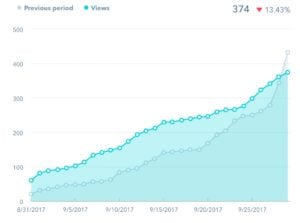
We also like to look at top blog posts by views, so that you can understand which content may be resonating better with your persona over some of your other content. HubSpot also allows you to set custom date ranges so that you can spend time analysing your top performing posts. These metrics allow you to see what content may not be working and you can then strategize how you will go about optimizing the underperforming content.

Social Performance Metrics - As all of our social profiles are synced within HubSpot; we can track things like a number of clicks on social messages we receive. We can also track the interactions our social messages receive from likes, @mentions to comments and shares. These metrics give you insight into the kinds of social messages that your persona likes to consume and engage.
The below graph shows us which social platforms are best suited for our persona as well as the conversion rates per platform. This allows us concrete insights into which platform might benefit from a little bit of experimenting; you could try running ads on your best platform or create a different content type to see what conversion you may receive. There are many things that you can do and try to increase your social conversion and reach.

There are a million and one more metrics and variables of metrics that we can go into; it is not as easy as just diving into highest performing blogs. It is important to note that the metrics you choose to analyse will always be campaign specific and that there is no “one size fits all approach.”
Jason DeMers from Audience Bloom says this; “Measuring effectively depends on having a clear vision, with specific goals, and a general understanding of what “success” means for your campaign.”
Avoid Missing Deadlines With These Project Management Tools and Techniques
As an agency, there are many tools and techniques that we use to stick to those ever-looming deadlines. As we know, deadlines are difficult to stick to at the best of times, so it is crucial for you to find the best fit technique to hold yourselves accountable to your various deadlines.
So how has this worked for us;
Morning Stand-up’s - This is a 20-minute gathering where we sit together and jot down our daily tasks and verbalise any problems that could hinder us in meeting a deadline. This is a great way for an agency to touch base before the day’s activities begin. In saying this, depending on the size of your agency this may not be a time effective way of holding each other accountable for daily tasks.
So what then?
Technology is wonderous like this; there are many tools out there to create tasks and deadlines for yourself and your colleagues;
Basecamp - Is a project management app, that can be accessed both on your computer and mobile device. This platform provides a central place for project communication and collaboration between you and your colleagues. You can also include your clients in on this nifty software, but you can give them limited editing and viewing options, so they can just see what they need to. In BaseCamp you can create large projects and break them down into smaller tasks. These smaller tasks can be assigned to anyone that has access to the project as well as assigning deadlines. Once you sign up BaseCamp will also send you an email of upcoming ToDo’s, so that you always stay ahead of those deadlines. You can also instant message your clients or colleagues right within the tool.
DoInbound - Is a project management tool that was developed by an inbound agency, so their platform is useful as they understand the challenges that inbound agencies face on a daily basis. You can create macro projects for client campaigns and assign smaller tasks to whoever is responsible; you can directly communicate with the software making it easy to touch base with your colleagues. It also has a built-in calendar which you can drag your daily tasks into, creating visibility into your staffs workday and capacity. There are also handy timers into the micro-tasks so that you can accurately track how long it takes to complete certain tasks, which assists with agency billing. When you sign up with DoInbound, you get access to free templates to assist in your campaign procedures as well as having short training videos to help with any problems you may come across.
monday - Is a smart collaboration and communication app that is used to get your team members working in together in one place. This software helps to streamline discussions and team contributions, this is done through a collaboration zone where team members can discuss project related items.
While this list can go on, I think you get the point. You will begin to work out which tools and techniques work best for your agency.
The digital landscape as we know it is rapidly changing from one day to the next. It is an extremely competitive and dense space, so you need a smart strategy to come out with positive results. This resource guide has taken you through a step by step process that can be used to begin your own content marketing journey.
So, let’s recap what you’ve learned:
- How to define your Buyer Personas
- How to map out your content strategy according to the Buyer’s Journey
- Content Marketing Tech Tools and how to kick-start your content machine
- An in-depth guide to the Blogging Fundamentals from choosing your blogging domain to uploading and search engine optimising your blog
- Writing techniques and how to check your grammar
- Where to share your content and how to quantify all of your marketing efforts
- We take a look at various Project Management Tools and Techniques
It is important to remember that content marketing is not a quick fix for your business or brand, it will require high-quality consistent content that endeavours to go above and beyond company goals.
Are you ready to get your agency on the path towards ultimate growth? Why not download our 121 Digital Marketing Growth Hacks Guide. It's FREE - you won't be sorry!



